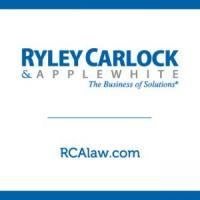In the U.S., the promotion of nearly all consumer products and services is regulated by the Federal Trade Commission (FTC). In addition to the FTC regulations on advertising, in Title 16 of the Code of Federal Regulations, the Commission has issued numerous Guides, which are not binding law, but which do reflect enforcement policy. Complaints and investigations by the FTC can result in fines in the millions of dollars, charged against principals of the erring company as well as to the corporation itself. In addition, each state has its own False Advertising regulations, usually under the heading of Business Codes; and recently, state Attorney Generals have been extremely active in prosecuting false, deceptive, and unsupported advertising.
The FTC has broad powers to regulate and monitor all advertisements for goods and services (with the exception of a few industries such as pharmaceuticals and aviation). This purview includes advertisements in any medium whatsoever, including infomericals, the Internet, and social media promotions. Under long-standing Commission statutes, regulations and policy, all marketing claims must be true, accurate, not misleading or deceptive, and be supported by sound scientific or factual research.
Here are 13 questions to ask yourself to help ensure that your marketing claims are not false, deceptive, misleading, or unsupported.
1. What are all the direct (express) and implied claims in this advertisement? Do I have enough facts, statistics, or other substantiation for every claim that a consumer might rely on? The Wellness Support Network (WSN) marketed Diabetic Pack supplements as a “Clinically Proven Natural Solution,” claiming that an independent clinical trial was done on the herbal ingredients “in this amazing product.” The marketers also conveyed their misrepresentations of a “diabetes treatment” via Internet keywords, metatag data, and Google Adword campaigns. But a California judge hearing the case, brought by the FTC, found that there was no scientific evidence for the efficacy of the product. The result in March 2014 was a $2.2 million judgment against the marketers.
2. What is the overall net impression that the average consumer or viewer would get from my ad? Is this impression or take-away message completely true and not deceptive? We have all seen the somewhat amusing Rob Lowe television ads for DirecTV as the superior cable service. But the FTC was not amused, alleging that DirecTV was deceptively advertising a discounted one-year programming package without clearly disclosing that:
-
The package comes with the requirement of a two-year contract.
-
The monthly cost of programming increases anywhere from $25 to $45 in the mandatory second year of the contract.
-
There is a penalty for quitting DirecTV before the two-year contract is up; and it is typically $20 for each remaining month.
-
Customers must actively “opt out” of receiving premium channels (such as HBO and Showtime) within the three-month trial period. Otherwise, they will be charged about $48 per month under this negative-option offer, which the FTC found to violate existing law.
3. Is a “FREE offer” truly free of charge, or are there hidden costs (shipping & handling) or misleading terms or conditions (e.g., a restocking fee). In other words, are there any aspects of your pricing or Ad that would constitute or appear to be a “bait and switch” offer? The offending ad for mortgages offered by Heritage Homes read, in huge letters, “ZIP. ZERO. NADA.” Also in big print, the ads said 0 money down* and 0 for paid closing costs*. In reality, however, the FTC found that behind those zeroes were hidden fees and charges, including a “good faith deposit” of as much as $2,000. The resulting settlement (in addition to a $650,000 civil penalty) imposed dramatic changes in how Heritage Homes and four affiliated companies may advertise: they are banned from misrepresenting key mortgage terms and any relevant facts about home sales. The FTC notes that it has “zero tolerance” for misleading uses of the word “zero.”
4. Am I making a promise that the product is “Safe” when the safety research is actually shaky, and am I making health promises that the product cannot deliver? Dr. Joseph Mercola was engaged in both dangerous types of advertising for his “safe” indoor tanning beds that would “Slash your risk of cancer.” In reality, such indoor tanning beds pose serious health risks, and may even cause skin cancer. Thus, in April 2016, a settlement with Dr. Mercola and two Illinois companies included $5.3 million in consumer refunds.
5. Are statements in consumer testimonials also backed by adequate substantiation? (Note that substantiation means “competent and reliable scientific evidence.”) Tommie Copper, Inc. deceptively made claims that its copper-infused clothing would relieve pain. The ads were in infomercials, brochures, social media, and print media such as Arthritis Today magazine. The infomercials included numerous consumer testimonials that these garments alleviated pain caused by MS, fibromyalgia, etc., and could provide pain relief comparable to or better than drugs or surgery! Unfortunately, it was literally too good to be true—because such claims were false or unsubstantiated. Thus Tommie Copper, Inc. and its founder agreed to pay $1.35 million to settle these FTC charges.
6. If a claim is misleading or potentially deceptive to the consumer, is it qualified or clarified by a disclaimer or disclosure?Often, in order to “cure” a potentially deceptive claim, a disclaimer or a disclosure is required, e.g., “The following blogs are paid reviews.” In the Dr. Mercola tanning bed case, the ads represented that an organization called the Vitamin D Council recommended these tanning systems—without disclosing that this Council (of the “sunshine vitamin”) was actually paid for its endorsement. The FTC in this case requires the literal disclosure “Paid endorsement;” otherwise, it appears to be an official and independent endorsement.
7. Is my necessary disclaimer or disclosure “clear and conspicuous,” that is, not hidden in a footnote or at the end of the website in Terms and Conditions, and not in a font that the FTC calls “microprint” or mouse print?! In downtown Phoenix, there is a huge electronic billboard showing three middle-aged women smiling, under a large headline: WE LOST 275 POUNDS! But under the picture of the three happy and thinner women was a disclaimer in tiny print: with surgery. This disclosure that the weight loss occurred only after bariatric surgery was quite clearly not clear and conspicuous, and thus violates FTC regulations.
8. For testimonials, have I used the median case or average experience of consumers, rather than the best case scenario?For example, under the previous FTC Guides, if the 50-pound weight loss of Tiffany G. of Brooklyn, NY was not typical, the advertiser could use the disclaimer “Results not typical. Your results may vary.” Naturally, many marketers would cherry-pick their very best case or scenario, to showcase in their advertising. But under the newer 2013 Endorsement Guides, the testimonial results reported will be interpreted to mean what others typically can expect to achieve. Thus, if the ad features the testimonial from Tiffany G.: “I blasted off 50 pounds in 6 months with WeightAway,” then the marketer will need a clear and conspicuous disclosure near that claim with the typical or average result: “Most women who use WeightAway for 6 months lose at least 15 pounds.”
9. If I use an expert or a celebrity endorsement, does it contain any representations which would be deceptive, or could not be substantiated if made directly by the marketer? The FTC’s Endorsement Guides make clear that claims made through endorsements must still be backed by sufficient substantiation—just as if the marketers made the claims or representations directly. TriVita, Inc. sold a 32-ounce bottle of a juice, called Noplea, made from the prickly pear, for $39.99. One infomercial featured the 70s supermodel Cheryl Tiegs, and claimed that the juice was effective for a myriad of maladies, including pain from stiff muscles, skin conditions, sinus infections, and even surgery, and certainly for swollen joints. But the FTC complaint alleged that far from the claim that “scientific studies prove Nopalea significantly reduces inflammation,” (emphasis added) there was no science at all; the claims were false.
10. Do my claims go far beyond what the science actually shows, especially in the field of cognition? My personal favorite example is the ad campaign for the product “Your Baby Can Read!” This marketing featured 14-month-olds flashing through word flashcards, two-year-olds reading books, and outrageous assertions that with this product, babies as young as nine months old would be reading stories. As in other cases, the marketers claimed that these successes were “proven” by scientific studies. In addition, there was the expert in infant research, a Dr. Robert Titer, Ph.D., to vouch for this product. The only problems were: (1) He was the creator of the product, hardly an independent endorser! and (2) He did not do the types of studies and evaluations that other experts in the field of infant research would normally do. Thus, the FTC filed suit in 2012, and its “final chapter” against this company reached its dramatic conclusion in 2014, with a fine for Titzer as well—reduced to $300,000, from $185 million!
A more recent case involving cognition was filed against the brain game company Lumos Labs with its ads for Luminosity that preyed on consumers’ fears of memory loss and dementia; and even claimed to prevent Alzheimer’s. Once again, the claims were not backed up by science: the games would make you better at playing these brain games, but there was no proof that such ability would translate to better performance at work, prevent neurodegenerative diseases, or help with ADHD. Once again, the testimonials lacked a proper disclosure—in this case, that glowing consumer statements were solicited with promises of large prizes, including a free iPad and tickets to San Francisco. The judgment against the company was an amazing $50 million, but suspended once the company pays $2 million to the Commission (reduced due to the financial condition of Lumos Labs).
11. If I claim that the results or benefits are “proven” do I have at least two clinical trials? For most claims, the standard for substantiation is still the general one that was spelled out in the Pfizer case of 1972, and in hundreds of other Consent Decrees or Consent Orders since then. This general standard of “competent and reliable scientific evidence” leaves room and discretion for the marketer to match the level of scientific support to the strength of the particular claim. However, when the marketer asserts that the benefits or the product are “proven,” (e.g., for a supplement or a cosmetic) then the FTC will expect and require at least two actual clinical trials—because the Commission has determined that this is what consumers will expect. In weight loss product cases of 2009 and 2010, the FTC spelled out what it meant by a “clinical trial:”
-
At least two adequate and well-controlled human clinical studies,
-
of the product at issue or an essentially equivalent product
-
conducted by different experts independently of each other,
-
that conform to acceptable designs and protocols and whose results, when
-
considered in light of the entire body of relevant and reliable scientific evidence, are sufficient to substantiate the claim.
12. Does my Ad or its format violate the FTC’s recent (Dec. 2015) Native Advertising guide? Native advertising is also known as sponsored content—with the copy designed to fit in with original online content in a seamless, non-intrusive manner. Advertisers want to reach online consumers directly—without blatantly interrupting the website content, video game, or mobile app. The first case under this FTC Guide ended on March 15, 2016, when Lord & Taylor agreed to settle Commission charges that it “deceived consumers by paying for native advertisements” to market a line of clothing. Specifically, the allegations were that Lord & Taylor edited, pre-approved, and paid for a favorable Instagram post, and another article, that were uploaded to a fashion magazine called Nylon. But Lord & Taylor failed to disclose its commercial arrangement with Nylon. In short, these were paid advertisements that looked like fashion reviews or editorials because they blended into the Native text too well!
And last, the lucky 13th tip:
13. Have I reviewed all environmental or "green" claims—for recycled materials, sustainability, etc. in manufacturing and packaging—to ensure that they are accurate and not misleading. American Plastic Lumber (APL) advertised its plastic lumber products—including picnic tables, benches, and trash cans—as being made almost completely of recycled plastic from items consumers already used, like milk containers or detergent bottles. Naturally, this promise appealed to many consumers looking for recycled and sustainable materials. The company touted its plastic lumber as “the environmentally responsible solution to all of your lumber needs,” because it was “made from recycled plastic milk jugs.” (Emphasis added.) But according to the FTC’s settlement, APL’s claims that its lumber was made from previously used plastic were false. Indeed, the FTC said some of APL’s products contained no post-consumer recycled content at all. So, for example, if you claim that your packaging is 70% recycled, make sure that is accurate.
Conclusion
Over the past three years, and especially since the FTC issued the Dot Com Disclosures, the Endorsement Guides, and the guide to Native Advertisements (in 2013, 2013, and 2015 respectively), website and social media marketers are under an even brighter spotlight of active oversight by a tech-savvy Commission. One way to stay out of trouble is to pause and ask yourself the 13 questions above—to help ensure that your advertising claims are true, accurate, supported, and not deceptive. The stakes are high for being less than careful and scrupulous with marketing claims, considering Commission fines to companies and their principals are often in the millions. Why risk an FTC inquiry or investigation, when—even if you are ultimately successful in defending challenged claims—your business has been disrupted for months, or even years? Finally, an investigation does not stop with just the Commission. The FTC sends press releases regarding settlements or written Consent Orders with a toll-free number for consumer complaints, and then concludes: “The FTC enters complaints into Consumer Sentinel, a secure, online database available to more than 2,000 civil and criminal enforcement agencies in the U.S. and abroad.” This means that in the most egregious cases, state Attorneys General—who also are continuously on the lookout for false advertising directed to their citizens—are eager and ready to pounce.




 i
i

